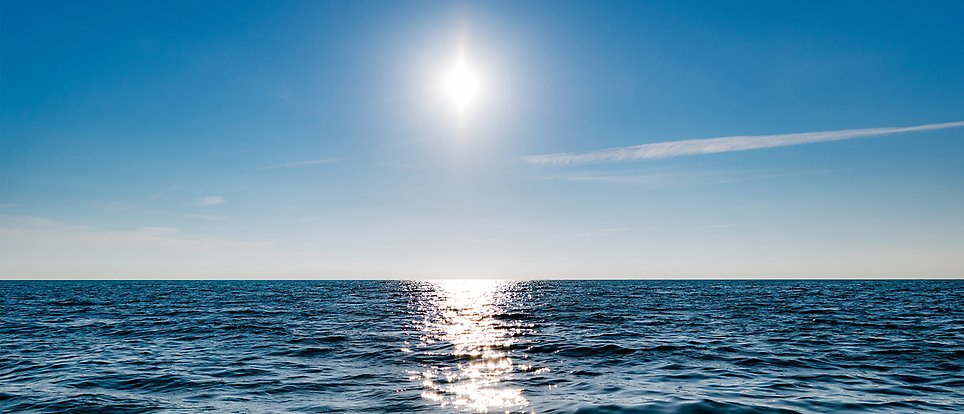Interaction between atmosphere and water

The oceans cover about 70 % of our planet. When studying the climate and making weather forecasts, it is therefore important to look at the interaction between the water and the atmosphere. These interactions determine, for example, how much heat, water vapour and greenhouse gases are transported between the air and the water. We study this through both direct field measurements and numerical simulations. We try to understand the importance of ocean waves and what controls how efficiently greenhouse gases are transported over water surfaces.
Our research
The interaction between air and water plays a crucial role in the weather and climate system. Our research group conducts research to understand how air and water interact and how this affects the transport of heat, momentum, gases and particles. We study this with different methods that include field measurements and numerical simulations. By increasing the understanding of air-water interaction, we aim to improve weather and climate models and make more accurate predictions of weather and climate.
The interactions between air and water are complex, highly nonlinear processes due to the differences between the two mediums in terms of heat capacity, turbulence, etc. Air-water interactions play a crucial role in weather and climate systems since they control the fluxes of momentum, heat, as well as mass and gases. However, the limited understanding of the air-water interaction processes poses a significant uncertainty in weather and climate sciences.
Air-water interaction have been our research focuses for decades, including ocean waves, turbulent fluxes, carbon dioxide (CO2) and methane (CH4), marine aerosols and upper ocean turbulence. The research goal is to more accurately describe those processes and represent them in weather and climate models. In situ measurements, remote sensing, and numerical simulations are used in our group to achieve the research goals. The observation platforms include the permanent stations Östergarnsholm, Erken and various temporary platforms during dedicated field experiments. The numerical models include Large-Eddy simulations, regional models and Earth System models. Two sub research themes are included, which are air-sea interaction and air-lake interaction.
Air-Sea interaction studies:
The interaction between atmosphere and ocean is a crucial link in the climate system as it represents the interface between the dominating spheres. Exchange of momentum, heat, humidity as well as mass, influences the energy, water and carbon cycles as well as the biochemical and chemical composition both in the atmosphere and the ocean.
Ocean surface waves can significant affect air-sea interaction processes, such as momentum, heat, mass and boundary layer mixing. However, they have been neglected in climate models for decades due to their small scales compared to atmospheric and oceanic dynamics. In addition, waves and air-sea interaction are crucial when modelling the climate system since they represent the boundary between the two dominating spheres, the atmosphere and the ocean. Waves interact with the atmosphere and ocean in numerous ways. Here, the focus is on the impact of waves on turbulence in the atmosphere and ocean, due to swell impact on mixing in the atmosphere and Langmuir turbulence in the ocean, and on the impact of swell waves on surface friction. These mechanisms have recently been shown by our group and others to act in a different way than previously expected and have significant impact in models due to the importance of secondary processes.
Primary marine aerosols from the bursting of air bubbles produced by breaking waves is the largest global aerosol source and influences the properties of the atmosphere and the climate over the Oceans and a large part of the continental landmasses. The marine aerosols both act as cloud condensation nuclei and reflect the incoming solar radiation.
We use data from several experiments to cover a variety of wave conditions when developing improved parameterization. A state-of-the-art atmosphere-wave-ocean-ice regional coupled model (Uppsala University-Coupled Model, UU-CM) has been developed in our group, in which we are introducing a correct response of the wave forcing of the atmosphere and ocean/ice. The coupling methodology is also being implemented in the global model EC-Earth.
